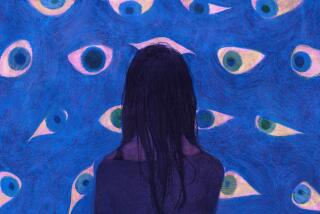Psychiatry’s sick compulsion: turning weaknesses into diseases
- Share via
IT’S JAN. 1. Past time to get your inoculation against seasonal affective disorder, or SAD — at least according to the American Psychiatric Assn. As Americans rush to return Christmas junk, bumping into each other in Macy’s and Best Buy, the psychiatric association ponders its latest iteration of feeling bad for the holidays. And what is the association selling? Mental illness. With its panoply of major depression, dysthymic disorder, bipolar disorder and generalized anxiety disorder, the association is waving its Calvinist flag to remind everyone that amid all the celebration, all the festivities, all the exuberance, many people will “come down with” or “contract” or “develop” some variation of depressive illness.
The association specializes in turning ordinary human frailty into disease. In the last year, ads have been appearing in psychiatric journals about possible treatments for shyness, a “syndrome” not yet officially recognized as a disease. You can bet it will be in the next edition of the Diagnostic and Statistical Manual of Mental Disorders, or DSM-IV, published by the association. As it turns out, the association has been inventing mental illnesses for the last 50 years or so. The original diagnostic manual appeared in 1952 and contained 107 diagnoses and 132 pages, by my count. The second edition burst forth in 1968 with 180 diagnoses and 119 pages. In 1980, the association produced a 494-page tome with 226 conditions. Then, in 1994, the manual exploded to 886 pages and 365 conditions, representing a 340% increase in the number of diseases over 42 years.
Nowhere in the rest of medicine has such a proliferation of categories occurred. The reason for this difference between psychiatry and other medical specialties has more to do with ideology than with science. A brief peek at both areas makes this point clear. All medicine rests on the premise that disease is a manifestation of diseased tissue. Hepatitis comes down to an inflamed liver, while lung tissue infiltrated with pneumococcus causes pneumonia. Every medical student learns this principle. Where, though, is the diseased tissue in psychopathological conditions?
Unlike the rest of medicine, psychiatry diagnoses behavior that society doesn’t like. Yesterday it was homosexuality. Tomorrow it will be homophobia. Someone who declares himself the messiah, who insists that fluorescent lights talk to him or declares that she’s the Virgin Mary, is an example of such behavior. Such people are deemed — labeled, really — sick by psychiatrists, and often they are taken off to hospitals against their will. The “diagnosis” of such “pathological behavior” is based on social, political or aesthetic values.
This is confusing. Behavior cannot be pathological (or healthy, for that matter). It can simply comport with, or not comport with, our nonmedical expectations of how people should behave. Analogously, brains that produce weird or obnoxious behaviors are not diseased. They are brains that produce atypical behaviors (which could include such eccentricities as dyed hair or multiple piercings or tattoos that nobody in their right mind could find attractive).
Lest one think that such a view is the rant of a Scientologist, it is no such thing. Scientology offers polemic to lull the faithful into belief. Doctors and philosophers offer argument to provoke debate.
It’s a natural step from using social and political standards to create a psychiatric diagnosis to using them to influence public policy. Historically, that influence has appeared most dramatically in the insanity defense. Remember Dan White, the man who murdered San Francisco Mayor George Moscone and Supervisor Harvey Milk in 1978? Or John Hinckley, who shot President Reagan in 1981? Or Mark David Chapman, who killed John Lennon? White, whose psychiatrist came up with the “Twinkie defense” — the high sugar content of White’s favorite junk food may have fueled his murderous impulses — was convicted and paroled after serving five years, only to commit suicide a year later.
The erosion of personal responsibility is, arguably, the most pernicious effect of the expansive role psychiatry has come to play in American life. It has successfully replaced huge chunks of individual accountability with diagnoses, clinical histories and what turn out to be pseudoscientific explanations for deviant behavior.
Pathology has replaced morality. Treatment has supplanted punishment. Imprisonment is now hospitalization. From the moral self-castigation we find in the writings of John Adams, we have been drawn to Woody Allen-style neuroses. Were the psychiatric association to scrutinize itself more deeply and reconsider its expansionist diagnostic programs, it would, hopefully, make a positive contribution to our culture by not turning the good and bad into the healthy and the sick.
The last thing the United States needs is more self-indulgent, pseudo-insightful, overly self-conscious babble about people who can’t help themselves. Better, as Voltaire would put it, to cultivate our gardens and be accountable for who and what we are.
More to Read
Sign up for Essential California
The most important California stories and recommendations in your inbox every morning.
You may occasionally receive promotional content from the Los Angeles Times.










